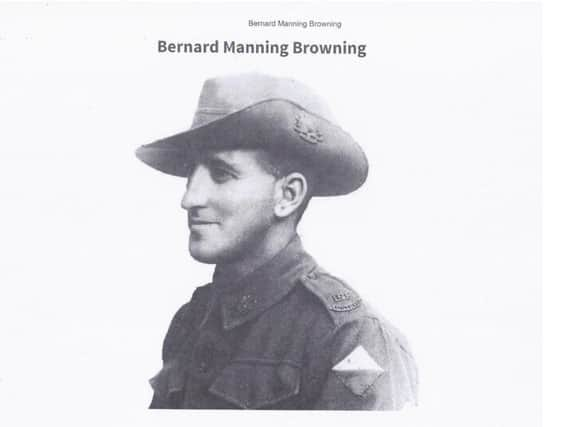Mystery of Australian soldier's plaque in Northamptonshire church unravelled by two friends


The memorial to Bernard Manning Browning - who died on October 3, 1918, during the Great War - has been on display in St Andrew's Church, Harlestone, for decades.
One resident, Judy Darby, says she was fascinated by the plaque for some 25 years.
Advertisement
Hide AdAdvertisement
Hide AdShe said: "I kept asking myself, why does a man from the Australian 28th Infantry Battalion have an ornate plaque in Harlestone?"
But now, with the help of her friend and genealogist Viv Benjamin, Judy says they have uncovered the truth.
Judy said: "I asked Viv about it once. Two hours later, she phoned me to say she had just spoken to Bernard's grandson.
"Amazingly, the first fact she uncovered was that Bernard Browning Manning has once lived in my own house in Upper Harlestone 100 years before me. This made me feel I had a special duty to uncover his story."
Advertisement
Hide AdAdvertisement
Hide AdViv and Judy together went on to research Bernard's life story. He was a farmer's who went to New Zealand with his cousin Charlie in 1908 when he was 20.
But finding it too cold and wet, they decided to move to Western Australia. There, the cousins took 1000 acres of land each in a place now called Kondanin, near Fremantle.
Judy said: "In 1912, Bernard returned to England to ask his second cousin Phyllis to marry him. Her father said no way was his daughter going to move so far away, so they eloped to Australia."
When war broke out in Europe, Bernard belatedly decided to do his bit and enlisted in 1917. He arrived in France in March 1918 but didn’t get to the fighting until the end of September. He was killed on his first day on the battlefield at Beaurevoir. This was the last battle that an Australian Regiment was involved in. His body is buried at Mt. St. Martin Cemetary.
Advertisement
Hide AdAdvertisement
Hide AdHe left his widow, Phyllis and two children, Frank and Joan aged 4 and 1. Today, he is immortalised by the plaque in St Andrew's Church in his native Upper Harlestone.
Judy said: "As it turned out, in 1919 Phyllis married cousin Charlie and had four more boys, one of whom is still alive in his nineties.
"The family descendants are still in Kondinin and were delighted to receive photos of Harlestone from us. But they were disappointed to find that they were not descended from wealthy landowners, but tenant farmers of Earl Spencer."
Since uncovering the story, Judy has led a presentation on one of her village's own lost soldiers to her local WI chapter.